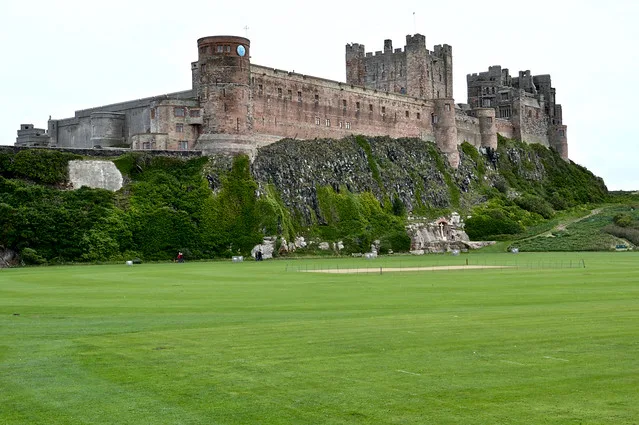Surrounded by the mists of time, legends and a turbulent history, Bamburgh Castle is one of the most beautiful corners of the north of England. This ancient fortress stands on a promontory overlooking the tiny town that gives it its name, a spectacular beach with wild dunes and a landscape dominated by the Sacred Island (“Holy Island”). If you can, get away on a day trip from Edinburgh (or Newcastle).
 |
| Bamburgh Castle |
Bamburgh Castle is super well located, there is no doubt about that. And surely for that very reason the hill on which it stands has been occupied since the 4th century. Perhaps it did not have the current appearance, nor was it called as it is today ( the Bretons called it Din Guardi ) but already then it was the capital of the British kingdom of Bernicia. Little is preserved of the time, although on the outskirts of the fortress there is a replica of the throne of the kings of Nortumbria in which anyone can sit and feel like a monarch for a few minutes. The views are breathtaking!
 |
| Bamburgh Castle |
In one of their raids on English shores, in 993, the Vikings looted and destroyed the original construction. Soon after, the Normans raised a new castle on its foundations, which has survived to this day in the form of the fortress, a massive structure built to withstand attack. Its walls are between 3 and 4 meters thick and hide an Anglo-Saxon well in which lives a cruel stepmother transformed into a toad (if we pay attention to the legend). In fact, King William II besieged it unsuccessfully in 1095 during a revolt and the castle did not fall until the Countess of Northumberland surrendered it to the threat of the monarch to blind her husband, whom she was holding prisoner.
 |
| Bamburgh Castle |
Bamburgh then passed into the hands of the English monarchy, suffered the attacks of Scotland (it is on the frontier land) and was the first castle in England to be attacked with artillery. The fort, faithful to the Lancasters, was besieged for 9 months and bombarded by the Earl of Warwick, Richard Neville, in 1464, during the War of the Roses. Later (and for 4 centuries) Bamburgh Castle became the property of the Forster family, until Sir William Forster declared bankruptcy in 1700 and all his assets were sold to the Bishop of Durham, Lord Crewe, who turned into a charity school.
In a dilapidated and abandoned state, it was restored several times until the Victorian industrialist (and inventor) William Armstrong gave it its current appearance.
One of the best views of Bamburgh Castle is from the inner courtyard. Here formerly the Anglo-Saxon basilica of San Pedro was located. Little remains, since on its remains the Victorian palace was built through which part of the visit passes. The great room is inside and is a Victorian marvel that allows you to see how modern living can be combined… with the preservation of heritage. The entrance is through the old medieval kitchen, today a kind of museum dedicated to the history of the place.
 |
| Bamburgh Castle |
Beyond the throne of Nortumbria there are three quite interesting buildings… and much reconstructed (but not for that lack of charm, that is clear). In the library and Clock Tower today there is a tea room of those in which you would spend hours... and more if it is a stormy day and you can see the sea from the window. Then there are the stables and, near the shoreline, the Neville Tower, named after Lord Warwick, responsible for the fall of Bamburgh Castle in the late 15th century.
Crossing the Neville Tower you reach the bottom of the fortress, where there is a curious Aviation Museum dedicated to the achievements of the first Lord Armstrong, some tastings in which archaeological excavations are made every summer and, at the end of it all, a 18th century mill and St. Oswald's gate, the oldest entrance, which leads to the beach.
There is so much to see and do that Bamburgh Castle makes for a day trip. If you like castles as much as I do, you will go crazy going from one place to another, admiring the stone, the buildings and the history that permeates everything, like the mist on a Saturday morning.
 |
| Bamburgh Castle |
If you have time, don't just visit the castle. Take the opportunity to stroll along its long white sand beach and dunes full of vegetation. If there is low tide, prepare the camera to take photos. On the other side of the fort is the village of Bamburgh. Although it is small and looks fast, it has charm.
How to get there
Bamburgh Castle is in the English village of the same name, 67 kilometers from Newcastle and 112 from Edinburgh. It is best to arrive by car, but from Chathill, Berwick upon Tweed and Alnmouth train stations there are buses that arrive (Arriva and Travelsure companies: 500, 501, 505, 515, 401 and 411).
